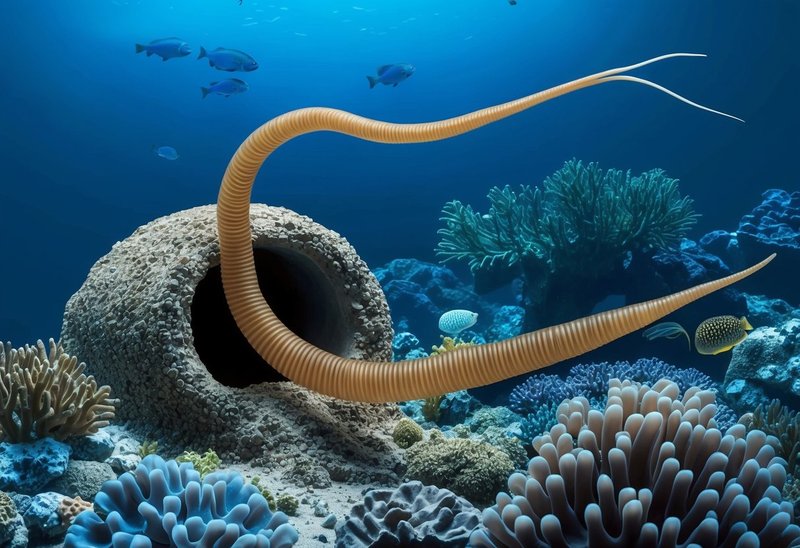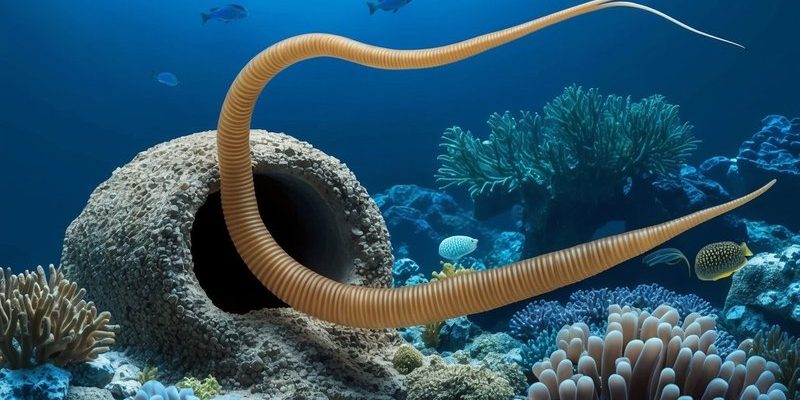
First off, it’s important to note that the Bobbit worm, scientifically known as *Eunice aphroditois*, is a predatory worm that can reach impressive lengths of up to ten feet! It’s not exactly the kind of creature you’d want to accidentally bump into while snorkeling. The worm hides in the sand, using its segmented body and sharp jaws to catch fish and other small marine creatures. Understanding the role of Bobbit worms in the coral reef ecosystem is essential in determining whether they’re harmful or helpful.
In this article, we’ll explore the Bobbit worm’s habitat, feeding habits, and potential impact on coral reefs. By the end, you’ll have a clearer picture of whether these worms are friends or foes in the vibrant world of coral ecosystems.
Where Do Bobbit Worms Live?
Bobbit worms make their homes in sandy or muddy substrates found in tropical and subtropical waters. You’ll typically find them burrowed into the ocean floor, where they can hide from predators while waiting for their next meal to swim by.
These worms are often found in association with coral reefs, which provide a rich habitat full of life. But here’s the kicker: while they thrive in these beautiful reefs, they’re not limited to just that environment.
Common Locations where you can spot Bobbit worms include:
- Coral reefs
- Seagrass beds
- Sandy seabeds
- Rocky substrates
You might be wondering what makes these locations so appealing to Bobbit worms. It’s all about food! The abundance of fish and invertebrates in coral reefs offers a buffet for these predatory creatures. But does their presence affect coral health?
Feeding and Hunting Behavior of Bobbit Worms
Let’s talk about how Bobbit worms actually hunt. They have a fascinating and somewhat gruesome feeding strategy. When prey approaches their burrow—think fish or small crustaceans—the worm lunges out with its long, sharp jaws to grab its meal.
This hunting method makes Bobbit worms efficient predators, but it can also lead to some unintended consequences. Here’s where the concern about their effect on coral reefs comes into play.
While they primarily feed on small fish and invertebrates, they can also inadvertently harm other reef organisms. For example, if a Bobbit worm snatches up a fish that plays a critical role in maintaining coral health, it can create a ripple effect in the marine ecosystem.
In summary: Bobbit worms play an important role in the food web, but their predatory nature can disrupt the balance within coral ecosystems.
Are Bobbit Worms Bad for Coral Reefs?
This is the million-dollar question. The answer isn’t black and white. On one hand, Bobbit worms are a natural part of the reef’s ecosystem. They help control populations of smaller fish and invertebrates, which can be beneficial. But on the other hand, their predatory behavior can lead to declines in fish that are essential for coral health.
Research indicates that **over-predation** by Bobbit worms can lead to:
- Reduction in fish populations
- Increased algae growth
- Disruption of the food web
When vital species that help maintain coral health are removed from the environment, it may lead to coral bleaching and overall degradation of the reef system. So, are they harmful? Yes and no. It really depends on the balance of the ecosystem and how many Bobbit worms are present.
The Role of Bobbit Worms in the Ecosystem
Despite the concerns about their predatory nature, it’s essential to recognize the role Bobbit worms play in the wider marine ecosystem. They are part of the natural balance—albeit a complex one.
Bobbit worms contribute to the biodiversity of coral reefs. Their presence indicates a healthy, functioning ecosystem. They are just one of many players in the intricate dance of life beneath the waves.
Here’s the thing: every organism has a role, even the ones that might seem harmful at first glance. Instead of solely focusing on the negative aspects, it’s worth considering how they fit into the larger picture.
Benefits of Bobbit Worms:
- They recycle nutrients in the ecosystem.
- They serve as prey for larger animals.
- They help maintain diversity in species.
This means that, while they can be considered harmful in certain contexts, they also play a crucial role in maintaining the health and vibrancy of coral reefs.
What Can We Do to Protect Coral Reefs?
If you love coral reefs and want to help protect them, there are several steps you can take. Protecting these ecosystems goes beyond just focusing on one species like the Bobbit worm. Here are some effective ways to contribute:
- Practice Responsible Snorkeling and Diving: Avoid touching or stepping on corals.
- Reduce Pollution: Keep plastics and chemicals out of the water.
- Support Marine Protected Areas: Advocate for preserving vital habitats.
- Participate in Coral Restoration Projects: Get involved in local conservation efforts.
Protecting coral reefs involves understanding the complex relationships among all species, including Bobbit worms. By supporting healthy ecosystems, we’re helping ensure these underwater wonders can thrive for generations to come.
So, are Bobbit worms harmful to coral reefs? The answer is nuanced. They’re both predators and important parts of the marine ecosystem, impacting coral health in complex ways. Understanding their role helps us appreciate the delicate balance of ocean life.
Ultimately, protecting coral reefs means looking at all the elements of the ecosystem, including creatures like the Bobbit worm. Instead of labeling them as purely harmful, let’s recognize their place in nature’s intricate puzzle. After all, every species has its role, and respecting that complexity will lead to healthier reefs and a thriving marine environment.

